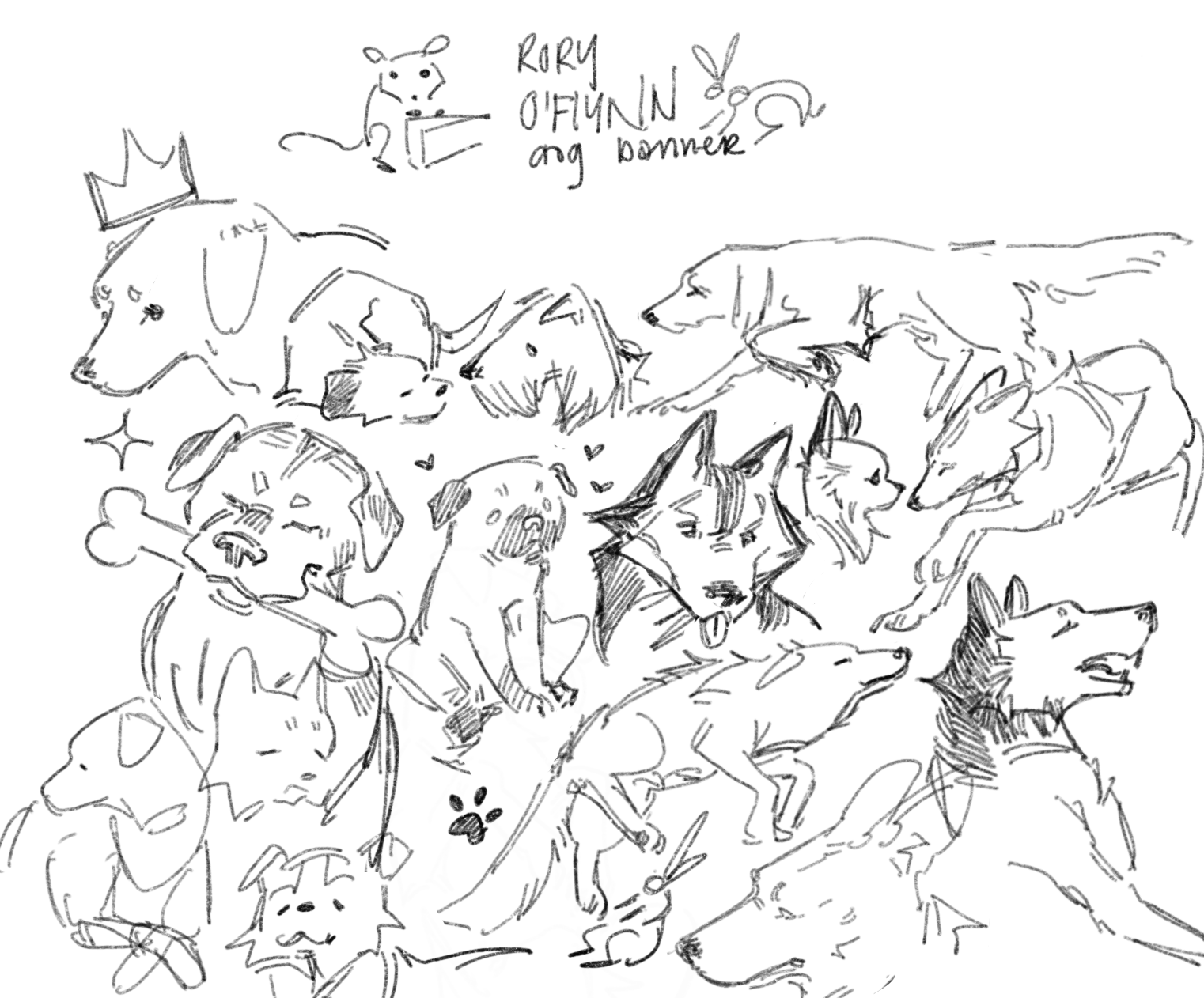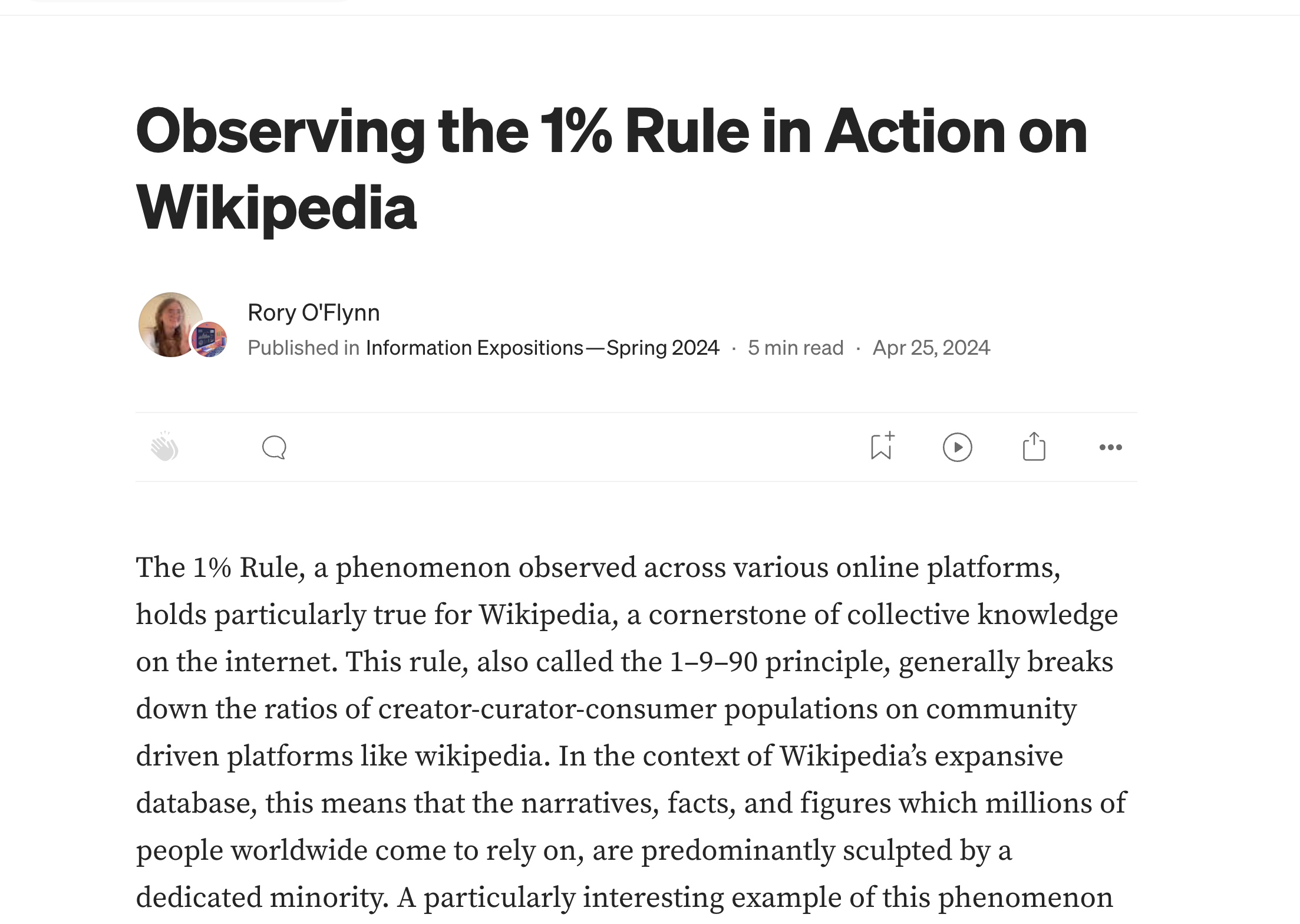
DATA STORYTELLING
WIKIPEDIA DATA ANALYSIS
This project explores the correlation between educational attainment and household size across the U.S., using Census data to investigate the traditional notion of the American Dream.
Through advanced data visualization and exploratory analysis, I uncovered complex relationships between education levels and family structures that challenged initial assumptions. The project emphasizes my ability to manipulate large datasets, derive meaningful insights, and effectively communicate those findings through both written analysis and visual storytelling.
Observing the 1% Rule in Action on Wikipedia
The 1% Rule, a phenomenon observed across various online platforms, holds particularly true for Wikipedia, a cornerstone of collective knowledge on the internet. This rule, also called the 1–9–90 principle, generally breaks down the ratios of creator-curator-consumer populations on community driven platforms like wikipedia. In the context of Wikipedia’s expansive database, this means that the narratives, facts, and figures which millions of people worldwide come to rely on, are predominantly sculpted by a dedicated minority. A particularly interesting example of this phenomenon is seen through the Wikipedia pages for the DUNE sci-fi books and film series — as all three pages for the novel and both movies ranked among the top 20 most visited pages in the past month (March 2024).
We can investigate how people interact with the Wikipedia pages by following two means of user interaction. First, the ‘page views’ metric reveals a timeline showing when people (the general public/wikipedia readers) get curious about DUNE. Many of the peaks on this chart coincide with major release dates in the films’ media campaigns, such as the days on which trailers were released as well as the dates of the movie premiers
The data shows that much like the public’s interest in the DUNE wiki pages, the interest of the contributors in those pages were heavily influenced by media campaign advertising the movies to the public, as the peaks here directly mirror those of the pageviews chart, with larger peaks of revisions happening during movie releases. Unlike the earlier pageviews visualization that showed a people having been influenced by the media campaign or otherwise becoming curious about DUNE, these bars represent revisions made to the page in order to archive new information.
One interesting thing to note is that across these related DUNE wiki pages, the particular page activity does not seem to match up with specific media releases. For example, the trailer for Dune: Part Two movie was released on May 3, 2023. This event corresponds with a spike on the revision history chart for the novels, in the top right corner. Rather than cause a spike on the movie’s respective page, the trailer seemed to bring attention to something on the much older wikipedia page for the novel, which has been published and unchanged since 1965.
There is yet another, smaller subset of creators among the whole of contributors, comprising 157 users who have edited at least one of the two DUNE movie-related pages. These users represent 13.82% of all contributors to all three pages. As we can expect, this 14% account for the majority of revisions made to these wikipedia pages: 5.61% of all revisions on the novels’ page, 51% of all revisions on the first movie’s page, and 43% of all revisions on the second movie’s page. The very low percentage of edits on the novels’ page suggests that many of these new editors focused mainly on the wikipedia pages for the two movies.
The vast majority of all edits comes from users who made revisions to all three DUNE pages, amounting to 42% of all revisions. On the node map above, these are the users in the very center; a cluster representing only 24 individuals in total. Following that, nearly one-fifth of the revisions (17%) were made by users who only edited the first movie’s page, which is consistent with the earlier findings of the page views and revisions on all three pages growing dramatically after the first movie’s release.
Beyond the 1% rule’s proportions of creators, editors, and readers, the clusters of editors between the various pages also reveal some interesting relationships about fans of the various pieces of DUNE media and how, among contributors, interest does or doesn’t carry over between the novels and the films–many are fans of one or the other.
The very modest percentage of the revisions from users who exclusively edited the novel’s page (3%) and the similarly small group of users who edited both the page for the DUNE novels and the page for the first DUNE movie (3%) indicates a low interest among fans of the novels versus fans of the movie. Considering this is only a five-year snapshot of revision history, it is not possible to know for certain if editors who were active on the novel’s page were the same individuals who were active with the recent films were released, which leads me to believe that this indicates a new wave of fans being brought into the fandom for the various DUNE properties.
While the total number of page views had reached an order of millions, the number of unique contributors to all three of the Wikipedia pages is only a fraction of that number, totaling 1,136 individual contributors.




